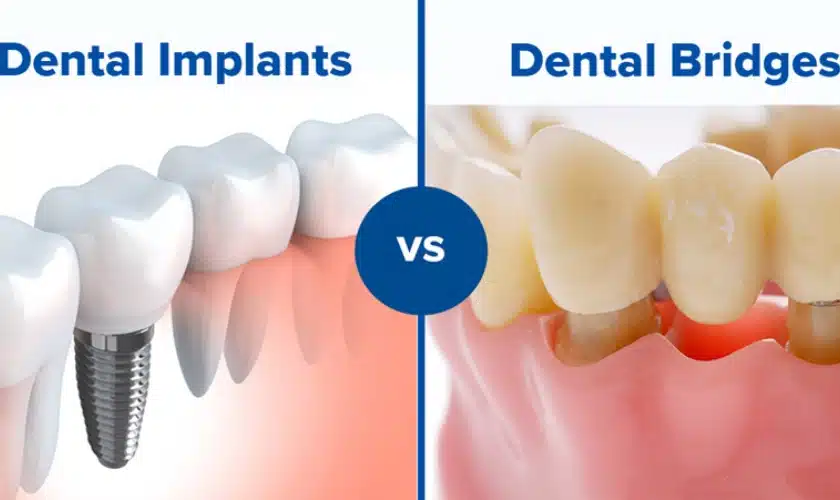5 Easy Facts About Dental Sense Shown
5 Easy Facts About Dental Sense Shown
Blog Article
Dental Sense for Dummies
Table of ContentsEverything about Dental SenseSome Known Details About Dental Sense 9 Simple Techniques For Dental SenseDental Sense Things To Know Before You Get This
are clinical gadgets operatively dental implanted into the jaw to recover a person's capability to chew or their look. They give assistance for fabricated (phony) teeth, such as crowns, bridges, or dentures. When a tooth is lost because of injury or disease, a person can experience complications such as fast bone loss, faulty speech, or adjustments to chewing patterns that cause pain.Dental implant systems are composed of an oral implant body and oral implant joint and might additionally include a joint fixation screw. Root canal procedure. The oral implant body is surgically put in the jawbone in area of the tooth's root. The oral implant abutment is normally affixed to the dental implant body by the abutment fixation screw and expands via gum tissues right into the mouth to support the attached fabricated teeth
(https://www.behance.net/matthewmusic)Structure of The Dental Implant System selecting dental implants, talk to your dental supplier concerning the potential advantages and threats, and whether you are a prospect for the treatment. Points to consider: Your total health and wellness is an essential element in figuring out whether you are an excellent candidate for dental implants, the length of time it will take to heal, and how long the dental implant may remain in place.
Smoking cigarettes might impact the healing process and decrease the long-lasting success of the dental implant. The healing procedure for the dental implant body might take numerous months or longer, throughout which time you usually have a short-lived abutment instead of the tooth. the oral implant procedure: Thoroughly follow the oral health guidelines provided to you by your dental service provider.
The Buzz on Dental Sense
Implant failing can lead to the need for another procedure to deal with or change the implant system. Recovers the ability to eat Restores aesthetic look Helps maintain the jawbone from shrinking because of bone loss Preserves the health of the bordering bone and gums Aids keep adjacent (neighboring) teeth steady Boosts quality of life Damages to bordering all-natural teeth throughout implant positioning Injury to the surrounding cells throughout surgical treatment, such as sinus perforation Injury throughout surgical treatment (for instance, fracture of surrounding jawbone) Inadequate feature, such as feeling like the teeth do not bite together normally A sensation that the tooth is loosened or twisting in area resulting from a joint screw loosening Implant body failing (looseness of the implant body) because of systemic infection, which might be extra likely in people with unrestrained diabetics issues due to neighborhood infection in bone and periodontals sustaining the dental official source implant body because of postponed healing, which might be more probable in patients who smoke Difficulty cleansing the periodontals around the dental implant, resulting in poor oral health Neglected periodontal condition Post-surgical feeling numb due to nerve impingement or damage Always notify health treatment carriers and imaging service technicians that you have dental implants prior to any type of magnetic vibration imaging (MRI) or x-ray procedures.
FDA is not knowledgeable about any kind of unfavorable occasions reported for MRI or x-ray procedures with oral implants. Oral implants systems are typically made from products that adhere to international agreement standards of the International Organization for Standardization (ISO) or ASTM International. These criteria have information of what makes a risk-free material.

An oral implant is a framework that replaces a missing out on tooth. With screw-like tools, the cosmetic surgeon inserts an implant into the jawbone, and it acts as a support for a synthetic tooth, called a crown.
Little Known Questions About Dental Sense.
Some people are not eligible for dental implant surgery. It is for oral surgeons to operate people with: intense illnessuncontrollable metabolic diseasebone or soft tissue illness or infectionIf these concerns are dealt with, an individual can have the surgical treatment. In, oral surgeons avoid operating people with: If individuals with any one of the above go through dental implant surgical treatment, there is a greater risk of the implant failing.

Oral dental implant surgery is a tailored procedure. Provide you time to heal. Attach the article and final crown, bridge or denture.
Next off, your surgeon will thoroughly place the oral implant into your jaw. Finally, your doctor will rearrange your gums and shut the laceration with stitches. If your dental implant is near the front of your mouth, your dental professional will certainly make a short-term tooth for you to put on till you recover. This way, you won't have a space in your smile while you recuperate.
Unknown Facts About Dental Sense
Your service provider can inform you what to expect in your scenario. Throughout the healing stage, your jawbone must fuse to the oral implant. This procedure, called osseointegration, is essential for stability and lasting success. This process can take anywhere from 3 to nine months. Sometimes, it may take longer.
Once your implant heals, your dental professional can attach the abutment (little adapter message) and your last restoration (crown, bridge or denture). This normally takes regarding one hour to finish and may call for a second small surgical procedure. You shouldn't really feel any discomfort throughout your oral implant treatment due to the fact that your service provider will certainly utilize drug to numb your gums.
Report this page